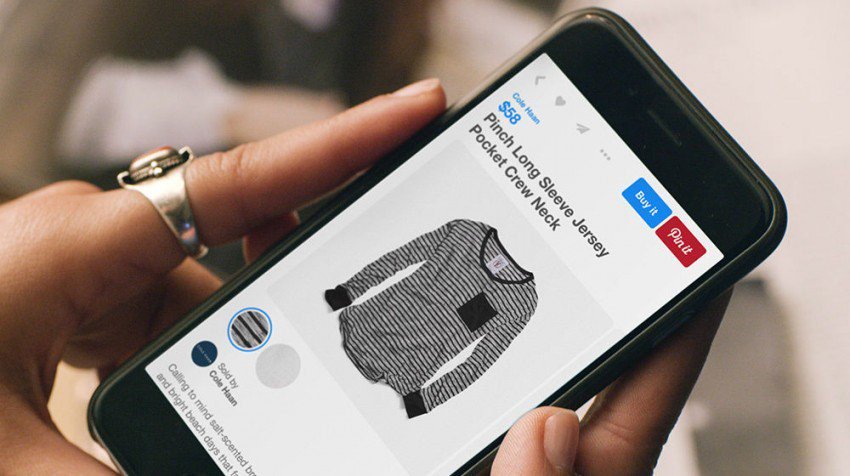With African online business acting as a microcosm for the global eCommerce industry, it is important to notice the global trends that affect the world’s online shoppers and sellers in order to plan and prepare for their emergence on our continent.
Whether your business is focused on internet sales growth, mobile payments, or customer-centricity, the coming trends are as exciting as they are revolutionary, and navigating them successfully will differentiate the profitable eCommerce players from their amateur counterparts.
One trend that has certainly shaped the global eCommerce village is a dependence on social media, as we explored in this blog post, but there are six others that you should educate yourself on so that you can strategize about how to leverage them in your operations.
1. Mobile will surpass desktop
According to Forbes, by the end of 2016, mobile shoppers will have spent $31 billion, and Internet Retailer tells us that “the number of consumers browsing and buying online will hit 270 million by 2020, driven largely by activity on mobile devices.” Mobile devices (smartphones, tablets, and even wearables) are enabling more people to conduct more eCommerce.
Mobile shopping is indeed bigger than we thought (as we wrote about in this blog post), due in part to the viral nature of mobile purchases and in part to the advancements in the field, which enable mobile shoppers to complete transactions quickly, easily, safely, and with greater efficiency than ever before.
African travel businesses that want to capitalize on this trend need to optimize the mobile experience on their sites to serve mobile shoppers with shorter attention spans, smaller screen sizes, and a propensity to browse and research from their mobile and later complete the sale from their desktop.
2. Beacons modernize the retail experience
A study conducted in conjunction with the Google Shopper Marketing Agency Council and M/A/R/C Research found that 84% of smartphone shoppers use their phones while in a physical store. Retailers are seeking ways to leverage this group to their benefit (instead of losing a sale to a shopper distracted by cheaper online alternative).
Using the proximity-based technology of beacons, brick-and-mortar stores are able to modernize the shopping experience by using shoppers’ smartphones to push personalized offers and content to help close the sale.
It is still early in the beacon technology eco-system, and it is possible that the best strategy for now is to let the big global retailers like Target and Tesco run their beacon trials and determine the best course of action thereafter.
3. The right time and place for contextual ecommerce
eCommerce businesses need to make an effort to be available when shoppers look for them – therefore they invest in SEO, inbound marketing, and other trends. But now, we are seeing a new path being carved out. This one sets shopping sites not to “pull” users when they are actively searching for relevant products, but instead to “push” users at the right moment in the right platform.
With “buy” buttons in apps like Facebook and Instagram, retailers can target consumers at the “zero moment of truth” (ZMOT).
Source: Smallbiztrends
Relatively easy and inexpensive to test, why not give contextual ecommerce a try now? You could be an early adopter of the method that will revolutionize how we advertise and sell online.
4. Omni-channel is a way of life
2016 will be the year that we all accept and embrace an omni-channel strategy. Statistics show us that an overwhelming majority of online shoppers begin their journey on one device and finish on another. Plus, multi-channel shoppers spend more than their single-channel counterparts.
Businesses can start by mapping out their buyer’s journey: the steps they take and the channels that they use. For example, a customer might begin the journey by clicking a Facebook ad on mobile, then download a shopping app while in the store or complete the purchase on the desktop when they return home.
By understanding which buyer does what on which device, businesses can invest in funneling the right information and offer to the right people on their channel and device of choice.
5. Biometrics to soar
The global biometrics and identity management market is expected to grow from $12.15 billion in 2015 to $37.8 billion by 2022 at a CAGR of 17.6%. Its effect on ecommerce will be in the realm of security. That’s right, selfies are no longer for the social media profiles of starlets and socialites. MasterCard can now use a selfie to authenticate a shopper’s identity, Apple’s Touch ID and voice recognition software is replacing passwords and security questions at financial institutions, and there is even talk of using heartbeat recognition as a security measure.
Like with beacons, it may be early for online sellers to take action with these technological advancements, but knowing they exist and monitoring their progress will serve ecommerce players well into the future.
6. Reach for the Star(buck)s
The commerce leader, Starbucks, ignited a revolution with its loyalty, rewards, and mobile payment options. The revolutionary trend of integrating loyalty programs and rewards with mobile payment solutions is here and ready to be leveraged by ecommerce sites.
In the US, Walgreen’s incorporated their loyalty program into ApplePay.
This is an important trend, especially for the travel industry. Forward-thinking travel operators can get to work on incorporating traveler’s points/mileage balance as an online payment option when booking travel, for instance.
Though Africa is certainly a hub for innovation, understanding the trends that are driving the global eCommerce scene helps us position our businesses to capitalize the right trend at the right time. Some of these changes are ready to be implemented right away, others are better watched at this point, but knowing the direction of the global industry can always help us direct ourselves to profit from the trends.






